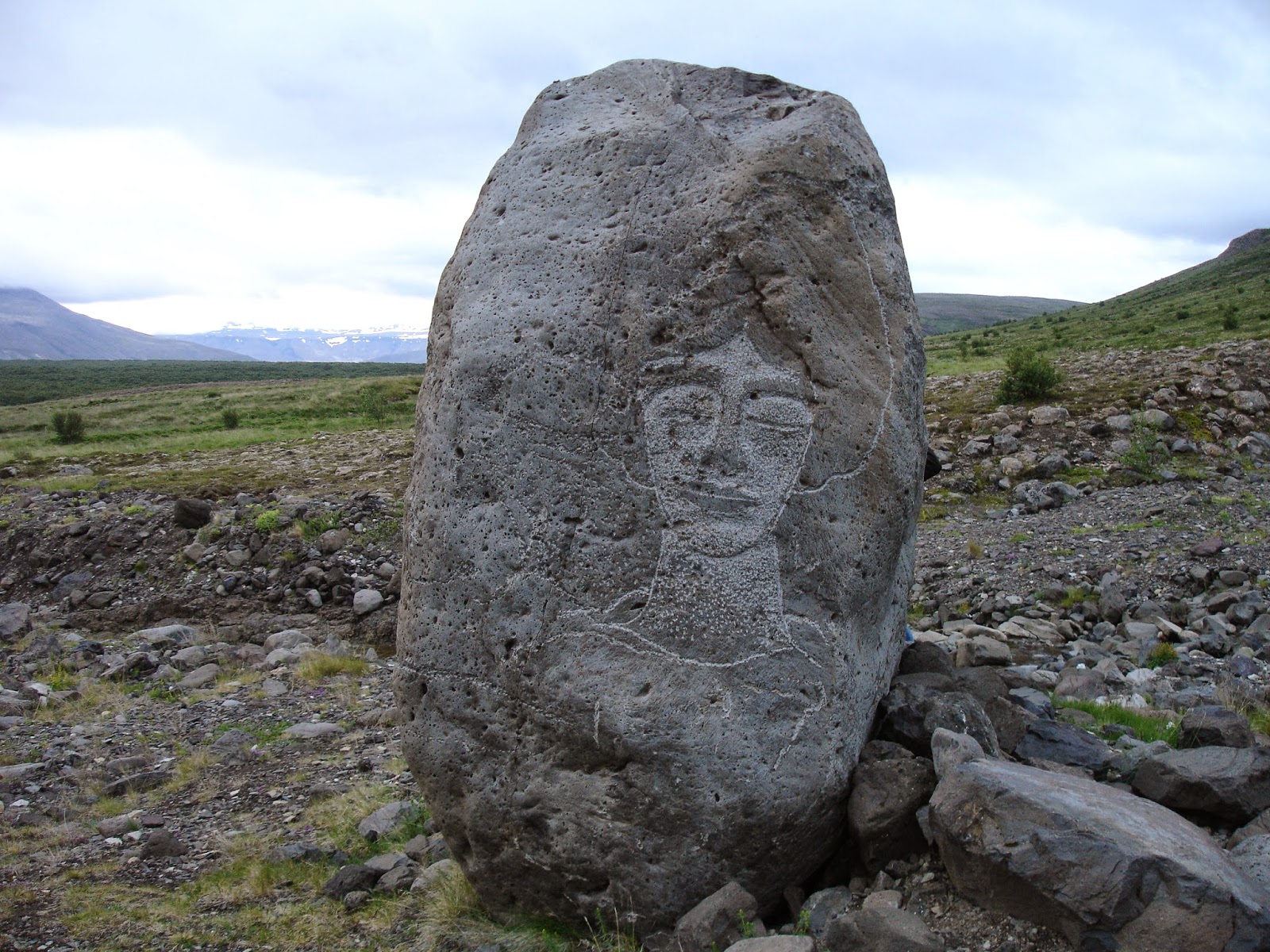Skaftafell is centred on a small raised heathland of about 500 sq.km. surrounded on three sides by the vast bulk of Vatnajökull and on the fourth, to the south, by gravel plains created by the glacier's outwash.
Once one of the most inaccessible places in Europe, it was home to a farming community for centuries. It was made into a national park in 1967 and is now within the Vatnajökull National Park.
This picture shows the view from the heath looking south east. You can see two outlet glaciers coming down from Vatnajökull, and the gravel plain, which extends upwards of 20 km in places, to the sea.
Here's WhysWhys posing on the east side of the heath, overlooking the nearest of those glacier tongues, Skaftafellsjökull, in sight of the point where it starts its descent from the Vatnajökull ice cap.
 |
| Summertime on the heath |
 |
| The northern end of the heath. The near peak, with a collar of clouds, is Krístinartindar, an easy climb rewarded with beautiful views from the top. |
 |
| Volunteers relaxing at the top of Krístinartindar |
Here a volunteer works on the restoration of an old sheep enclosure, with a view west to Skeiðaràjökull, another outlet glacier from Vatnajökull.
Old bridges are brought for dismantling ...
... to be recycled into boardwalks, steps and ...
... new bridges.
The black basalt cove and waterfall, Svartifoss, can be seen in the background.

The black basalt columns of Svartifoss.
 |
| Volunteer lunch break at the top of Huntafoss ('Dogs' Waterfall') |
 |
| Traditional Farm Buildings |
 |
| Volunteers putting in drainage and repairing one of Skaftafell's busy paths. |
When we dig into the ground at Skaftafell we come across banded layers like these. They are deposits from volcanic eruptions. They can be checked against written records and cross-referenced to similar deposits to provide dating information, so each one can be connected with a specific eruption. One of the uses of this information is to help in the dating of archaeological remains.
 |
 |
| The start of a busy summer weekend at Skaftafell campsite |
































